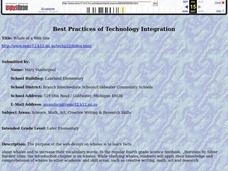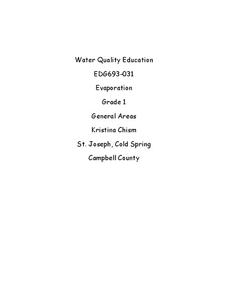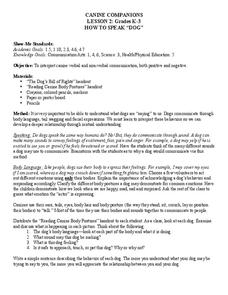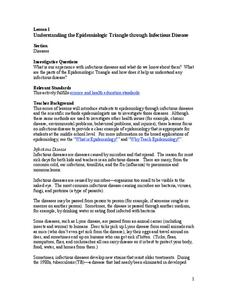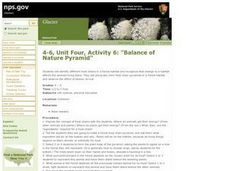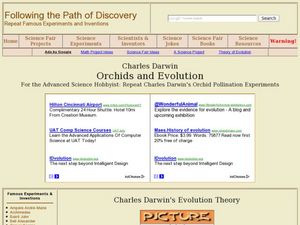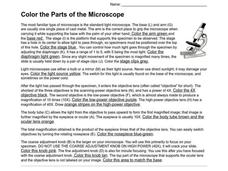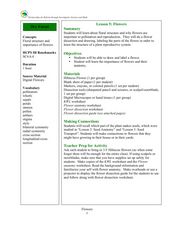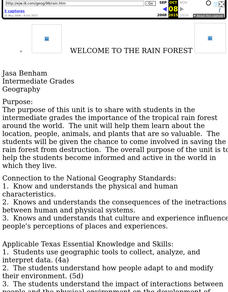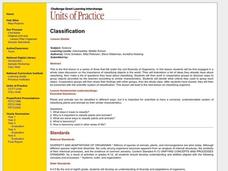Curated OER
Oil and Gas As A Source of Energy
Students discuss the reasons why oil and gas are the United States' main source of energy. In groups, they use the internet to research how the resources are formed and the amount of consumption by the United States. They choose books...
Curated OER
Whale of a Web Site
Young scholars compare and contrast differences and likeness of whales/fish and toothed/baleen whales and discuss what they know about whales and what they would like to study about whales. They then describe the characteristics of a...
Curated OER
Understanding Seasons
Students study the four different seasons: fall, winter, spring, and summer. They match the seasons with pictures that relate to them developing an understanding of the differences. They then complete the worksheet about the seasons.
Curated OER
Simple Machines IV - Wheels and Axles
Fourth graders study everyday examples of simple machines. They examine how the combination of a wheel and axle works more efficiently than either in isolation. In a demonstration lesson, they see how a spring scale shows a force pulling...
Curated OER
Evaporation
First graders explore, analyze, document and study weather and the water cycle. They observe the weather and begin a weather journal. Each student interacts with the concepts of evaporation, condensation and precipitation, clouds,...
Curated OER
Classification of an Echinoderm
Students study starfish through dissection. In this biology lesson plan, students explore the lives of starfish as they view a slide show, observe parts of echinoderms, and compare the classification of the starfish with other...
Curated OER
Scientific Revolution
In this scientific revolution study guide worksheet, pupils respond to 14 short answer questions. The questions correlate to assigned readings in a textbook.
Curated OER
Making the World A More Beautiful Place: Earth Day
Students study ways to take care of the environment as part of an Earth Day activity. In this environment lesson, student listen to a read aloud of Barbara Cooney's, Miss Rumphius, before discussing how she works alone but is part of an...
Curated OER
Where Are the Dinosaurs?
Students study dinosaurs by completing two activities and group discussion. In this dinosaur lesson plan, students discuss dinosaurs and extinction as a class. Students make dinosaur dioramas, a hatchable dinosaur egg after watching a...
Curated OER
Desert Tortoise Adaptations
Students observe the Desert Tortoise in its natural surroundings. In this adaptations lesson, students study and take pictures of an animal in its habitat, then design a PowerPoint which addresses adaptations, biodiversity, and threats...
Curated OER
The Water Cycle and Global Warming
Students study the flow of water in the environment. In this water cycle lesson students evaluate the consequences of changes in the water cycle using data.
Curated OER
Canine Companions
Students interpret canine verbal and non-verbal communication. In this dog communication instructional activity, students discuss dog communication through bark and body language. Students study the 'reading canine body postures'...
Curated OER
Understanding the Epidemiologic Triangle through Infectious Disease
Young scholars examine the epidemiologic triangle. In this disease lesson, students discuss infectious disease as they study how they spread and discover their families' experiences with them. Young scholars research Internet sites to...
Curated OER
Amino Acids and Protein
Students study amino acids and discover the different proteins that are in our bodies. In this living environment lesson students build protein bracelets with beads as an example of the different amino acids.
Curated OER
Balance of Nature Pyramid
Students study the concept of food chains and create a physical forest food chain pyramid. In this balance of nature pyramid lesson, students identify the ingredients needed on each level of the pyramid then make connections...
Curated OER
Orchids and Evolution
Students study Charles Darwin's evolutionary theory and how he applied it to orchids. For this evolution lesson students repeat Darwin's orchid pollination experiment.
Curated OER
Anatomy and Physiology
Students explore anatomy and physiology using various activities. In this biology lesson, students reasearch about medical radiation and its applications. They study cell cycle, cell division and other processes that sustain life.
Curated OER
Chromosomes
Students study chromosomes and how molecular half life affects them. In this chromosome lesson students complete several lab activities on calculating half life, and cracking alkanes.
Curated OER
Microscopes
In this microscopes worksheet, 7th graders read information about microscopes and how they work. Students then complete several questions about the passage. Students study the diagram of a microscope using the letter definitions.
Curated OER
A Reef of Your Own
High schoolers study the reproductive strategies of reef building corals. In this coral reef instructional activity students describe the behaviors of reef building corals and their nutritional strategies.
Curated OER
It's Not Easy Being Green
Students investigate the environmental costs of operating golf courses. In this current events lesson, students visit selected websites to study golf course needs and green design options.
Curated OER
Dry Forest: Flowers
Students explore botany by examining diagrams. In this plant reproduction activity, students define a list of plant vocabulary terms and identify plant anatomy from a diagram. Students complete several plant activity worksheets and study...
Curated OER
Welcome to the Rain Forest
Fourth graders become aware of the worlds rain forest and study the plants of the rain forest and the adaptations they have made to survive in the environment.
Curated OER
Classification
Students investigate how to classify items based on similar characteristics. They study the scientific system of classification.

